| Date: 1944 Jun 29/29 | A/C Type: B-24 H Liberator | SN: 42-51095 | Code: Z5 - Q | A/C Nickname: Shoo Shoo Baby | 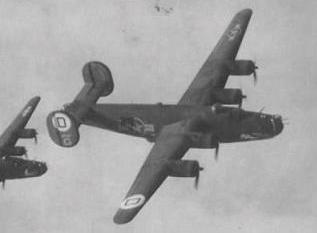 |
|||||
| File: 350 | Airforce: USAAF | Sqn/Unit: 458 BG - 754 BS | Mission/Raid: Aschersleben | |||||||
| 1 | Pilot | 2Lt. Charles B. Armour evd, Zele 5 Sept. '44 | 9 | RWG | Sgt. William P. Owens evd, POW Antw. 21 Jul '44 | |||||
| 2 | Co-pilot | 2Lt. Donald E. Blodgett evd, Zele 5 Sept. '44 | 10 | TG | Sgt. Everett S. Allen evd, POW Antwerp 18 Jul '44. | |||||
| 3 | Nav. | 2Lt. John O. Fullerton evd, Limburg 15 Nov. '44 | 11 | |||||||
| 4 | B | 1Lt. Fred H. Erdmann evd, POW Antwerp 21 Jul '44 | 12 | |||||||
| 5 | E | S/Sgt Carry C. Rawls POW Scheldt river | 13 | |||||||
| 6 | RO | S/Sgt. Jerome Brill POW Scheldt river | 14 | |||||||
| 7 | BTG | S/Sgt. Frank Peichoto evd, Limburg 15 Nov. '44 | 15 | |||||||
| 8 | LWG | Sgt. Billy J. Davis evd, POW Antwerp 18 Jul '44 | 16 | |||||||
Six men bailed out over Vollenhove and landed in the Northeast Polder. Aircraft flew on (one engine out and punctured fuel tanks), turned southwest and tried to get to the French coast to cross the North Sea at the most narrow point (The Channel) in an attempt to reach England. Fuel ran out after Bergen-op-Zoom, the 4 remaining crew jumped out. Empty aircraft crashed on a farm in hamlet Nieuw-Namen. |
||||||||||
Version per 24 Dec. 2016.
After the target south of Magdenburg in Germany was bombed, a Flak shell exploded under this aircraft. It was seriously damaged and fell out formation, leaking fuel. Left Waist Gunner Sgt. Davis was hit by shrapnel to the head and unconscious for some minutes. His helmet saved his life. He received first aid, the wound looked not too bad. P-51 Mustangs escorted the crippled bomber home, but over the east side of Lake IJsselmeer (Old Zuyder Sea). It became clear fuel would run out soon. Six men jumped out by parachute: navigator 2Lt. Fullerton, bombardier 1Lt. Erdmann and the four gunners: sergeants Peichoto, Davis, Owens and Allen.
The six men of 42-51095 jumped in the Netherlands, west of Vollenhove: Fullerton, Erdmann, Peichoto, Davis, Owens and Allen.
The six landed in the wheat- and rye fields in the Northeast Polder, near Vollenhove. In the tall wheat they could remove their gear and were soon contacted by members of the Dutch resistance who had witnessed their landing. In the evening they were individually collected from deep inside the wheat fields and smuggled to Vollenhove. Here the men stayed for one night and received workman clothes. Not all were in the same house. Four are on the list of the Kingma-family, see below. The list shows 37 names, but 4 names were not recorded.
Meppel to Amsterdam
The next step from Vollenhove was not via Urk and the ferry over the Lake, but to Meppel. In the care of resistance leader and pilot helper Peter van den Hurk (Medal of Freedom in gold). This was already on the next day. In civil clothes and with false papers they found themselves back on the Meppel train station. Sgt. William P. Owens first recognized Sgt. Billy Joe Davis, then he also spotted three other crew (five men). The train-trip went to Amsterdam. This is not in southern direction towards the Belgian border, but Van den Hurk had good contacts with the Amsterdam-group and used this (less suspicious) escape way often.
Amsterdam to Erp
Amsterdam had more safe houses and a busy railway station with lines going in all southern directions. With three guides and in different carriages the men arrived on the central station. Lt. Fullerton mentions they all six ended up in Amsterdam and village Zaandijk. This was with pilot helper and police-inspector Meewis and others. Stay in the Dutch city was one week. On the 7th of July 1944, Lt. Fullerton made a train trip to Veghel and then Erp, in the safehouse of the Otten family. Also the others found ways leaving Amsterdam and also arrived (guided) in Erp before 14 July 1944.
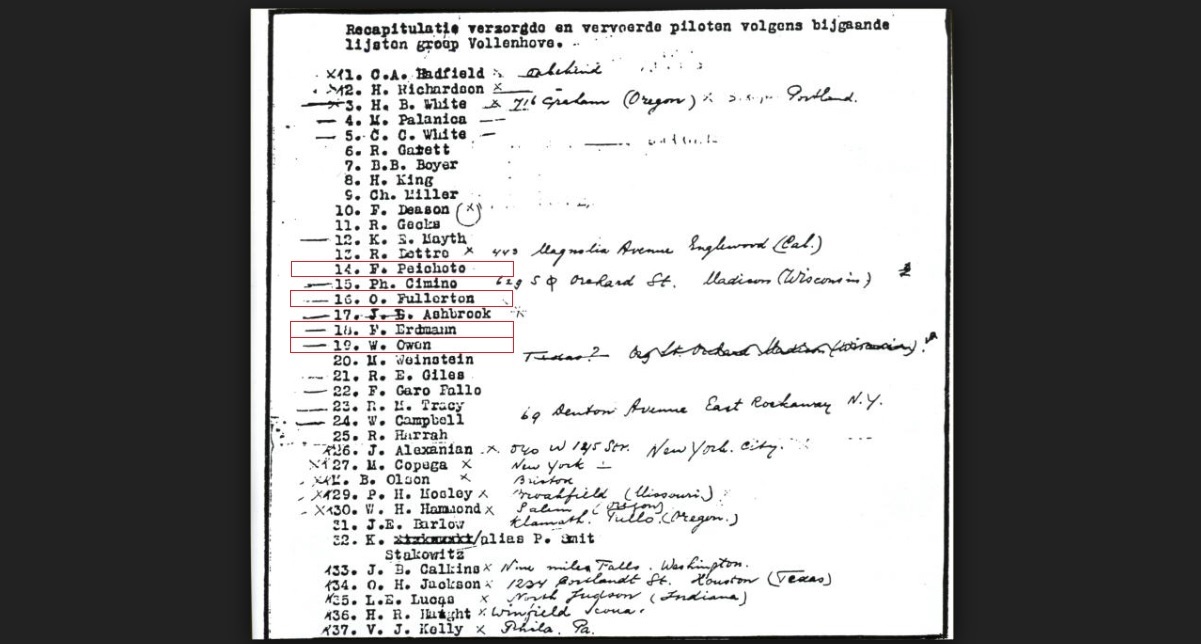
Erp, safe house Otten family.
Erp had two ways to the South and goal was to get in Brussels, the start of the Comete escape line, leading to Spain. From Erp route 1 was southwest to Antwerp and then to Brussels. Route 2 was southeast into Limburg to the Liège/Hasselt area and on to Brussels. However, end July 1944 both routes were infested with traitors and German spies, many helpers and airmen got arrested. Also there was strong German military presence because D-Day started 6 June 1944 and the Allied forces were moving up north.
Erp to Antwerpen, team Davis-Allen (POW) and Erdmann-Owens (POW)
In Erp the six men of B-24H 42-51095 'Shoo Shoo Baby' were split-up in groups of two. Two teams, Davis-Allen and Erdmann-Owens were taken by the Dutch resistance to the Dutch/Belgian border north of Antwerp. Here female guides took over, but those girls worked for the Belgian traitors in the line. They led the four Americans into the Gestapo HQ in Antwerpen on 18 and 21 July 1944 (POW).
Erp to hamlet America, Liège and back to Weert, Lt. Fullerton and Sgt. Peichoto
Lt. John Fullerton & Sgt. Frank Peichoto were guided from Erp along the southeastern route towards Liège. They made a stop at the famous safehouse farm 'de Zwarte Plak' (Poels family) in village America near Horst. They are on the 'Zwarte Plak'-list, together with other airmen they met there and who were also passed via the Northeast Polder and Meppel: 2Lt. Richard M. Tracy and Sgt. Frank E. Garofalo of B-17G 42-31189 "Paragon" and RAF airmen Dennis Sharpe and Raymond Francis (Lancaster ME722, Zwolle). Fullerton and Peichoto did not make it into Belgium to Liège. They came as far as Hoensbroek north of Maastricht and Liège, but the escape line was disrupted. A turn in northern direction was necessary and the men were housed east of Weert. Goal was to let them pass into Belgium at Bree, but also this line was broken.
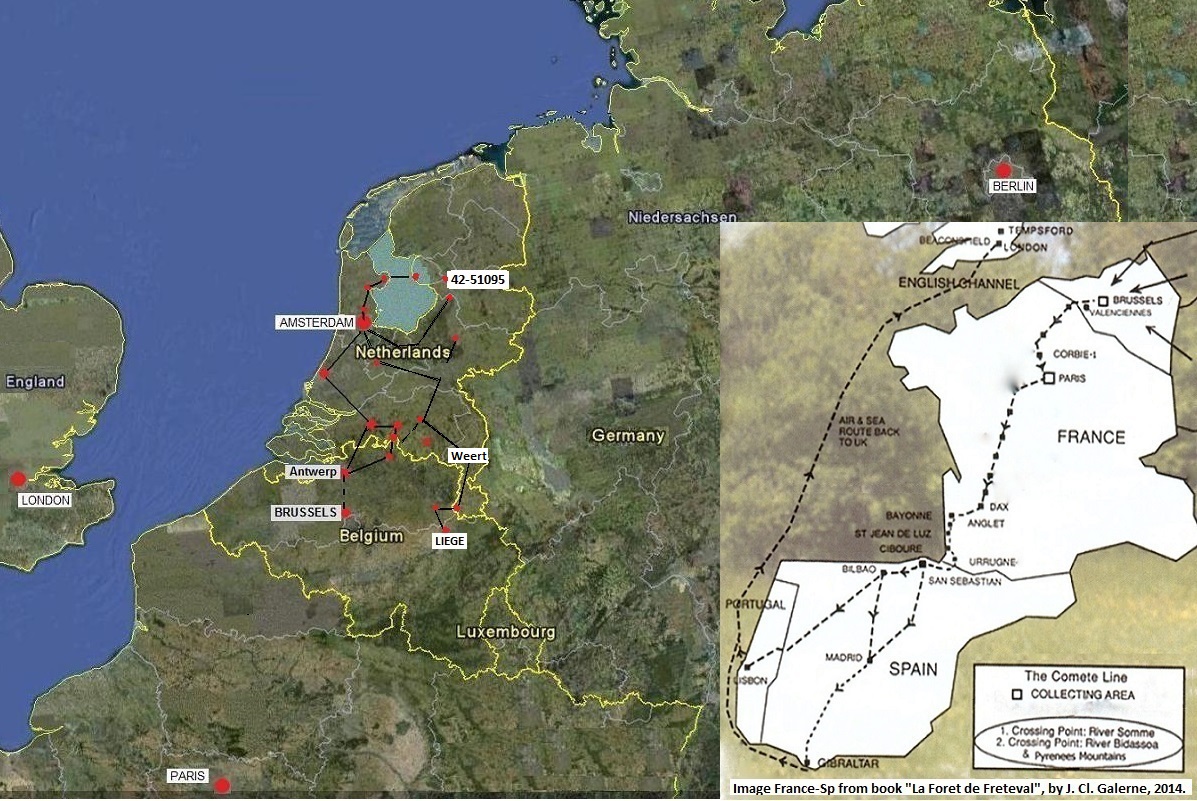
Frontline Weert 15 November 1944: Fullerton and Peichoto liberated in safehouse in Kelpen.
For three months Fullerton and Peichoto stayed in Dutch safehouses east of Weert in Leveroy, Heythuysen, Roggel and Kelpen. The frontline moved up to here. The British army reached the south bank of the Wessum-Nederweert Canal. The Germans and the isolated safe houses were just on the other side of the canal. The British laid down heavy artillery in that area and Fullerton and Peichoto were in dug-outs and cellars for weeks, covering for the exploding shells. Finally on the 15th of November 1944 they were liberated and in safe hands. Mr. Andries Mooren did a lot of brave evaders-help work in WW2 and received in 1946 the Medal of Freedom with bronze Palm.
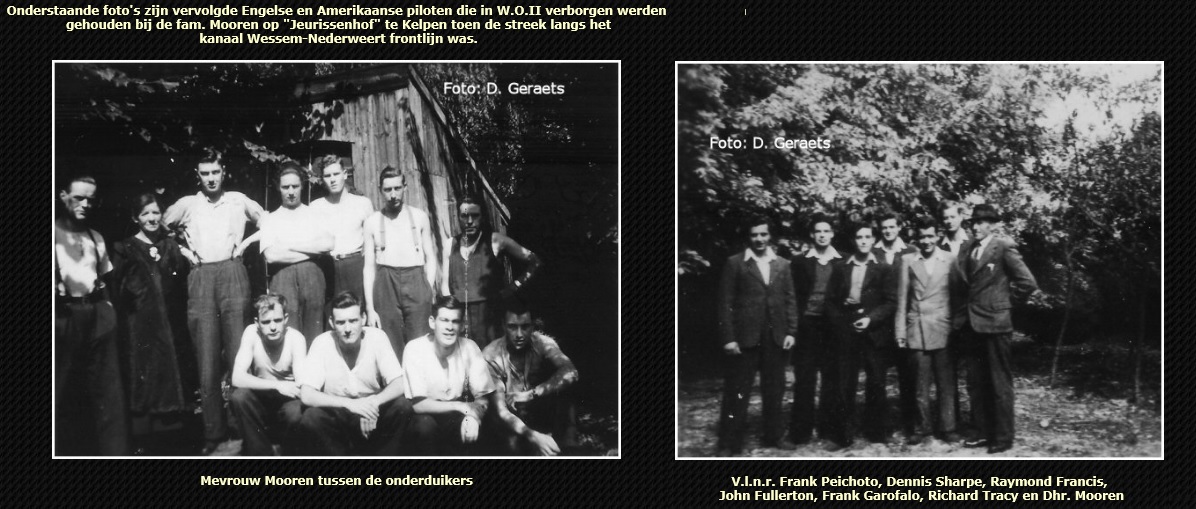
Above photo as seen on website: http://www.schumulder.nl/elly/Kelpen-Oler%201.htm
S/Sgt. Carry C. Rawls and S/Sgt. Jerome Brill, parachuted in Scheldt river, harbor entrance of Antwerpen (POW).
Engineer Rawls and radio operator Sgt. Brill expected a belly landing and destroyed as much as possible equipment while in the air. They used their parachute just before the pilots did. At that point position was above the Scheldt river, the wide river that is the harbor entrance to Antwerpen. Both came down in the water at dyke-village Doel (today the site of a nuclear power plant). Rescue came by civilians with a rowing boat, German soldiers waiting on the shore (POW). Both were placed in a truck that passed their burning aircraft wreck on way to Antwerpen. Sgt. Rawls had a broken leg and was hospitalized first before he was send to Dulag Luft end July 1944.
Pilots 1Lt. Charles B. Armour and 2Lt. Donald E. Blodgett. Parachuted west of Antwerpen, evaded.
Jumped 30 seconds later and parachuted down near the Dutch-Belgian border west side of Antwerpen. This was east of Terneuzen/Hulst. Both could go in hiding with Belgian civilians. They were moved several times during a period of 10 weeks. Last safehouse was between Antwerpen en Gent in village Zele. The village and the men in hiding were liberated by passing British troops on 5 September 1944. On the 12 of September Armour and Blodgett were back in England and in November 1944 back in the US.
Tragedy crash on farm.
The empty B-24 flew on for a short while and made a 160° turn downwards. The fields were wide with few houses, but unfortunately the bomber crashed onto a farmhouse, killing the father, mother and daughter of the Staes family in hamlet Nieuw-Namen, northwest of Antwerp.
Below.
After the six men had jumped out west of Vollenhove, pilot Lt. Armour messaged on the radio that he flew in direction of Rotterdam. In England the location of the message was fixed and recorded on the map. Armour managed to fly low over occupied Holland another 120 miles after the six jumped at Vollenhove.
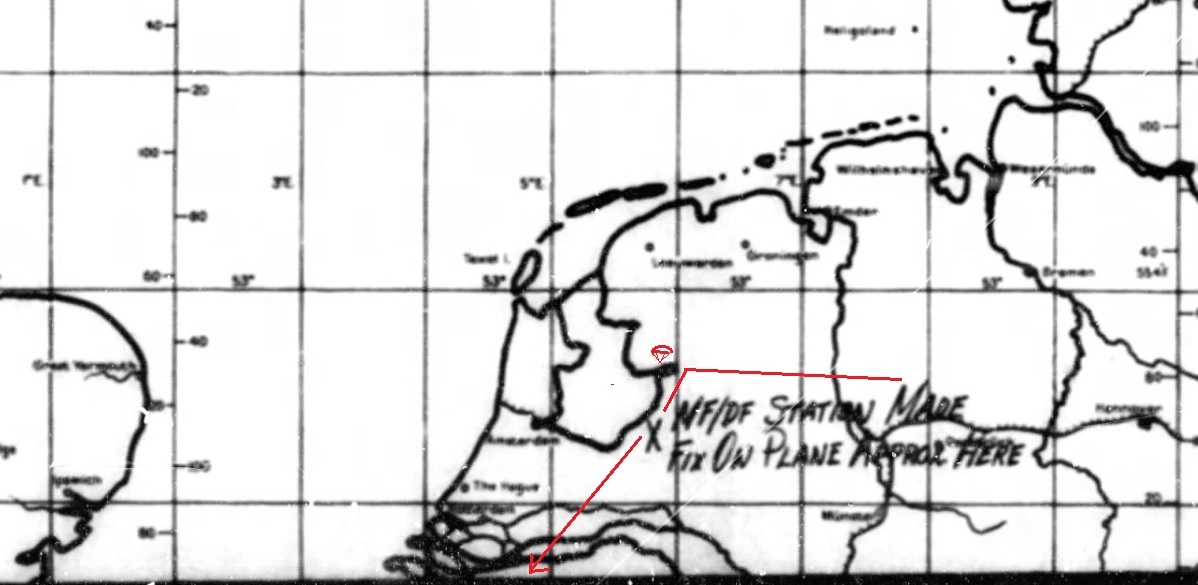
Sources/read more:
- MACR
- http://www.teunispats.nl/t3853.htm
- http://www.458bg.com/crewarmour.htm
© ZZairwar (Zuyder Zee Air War)
.